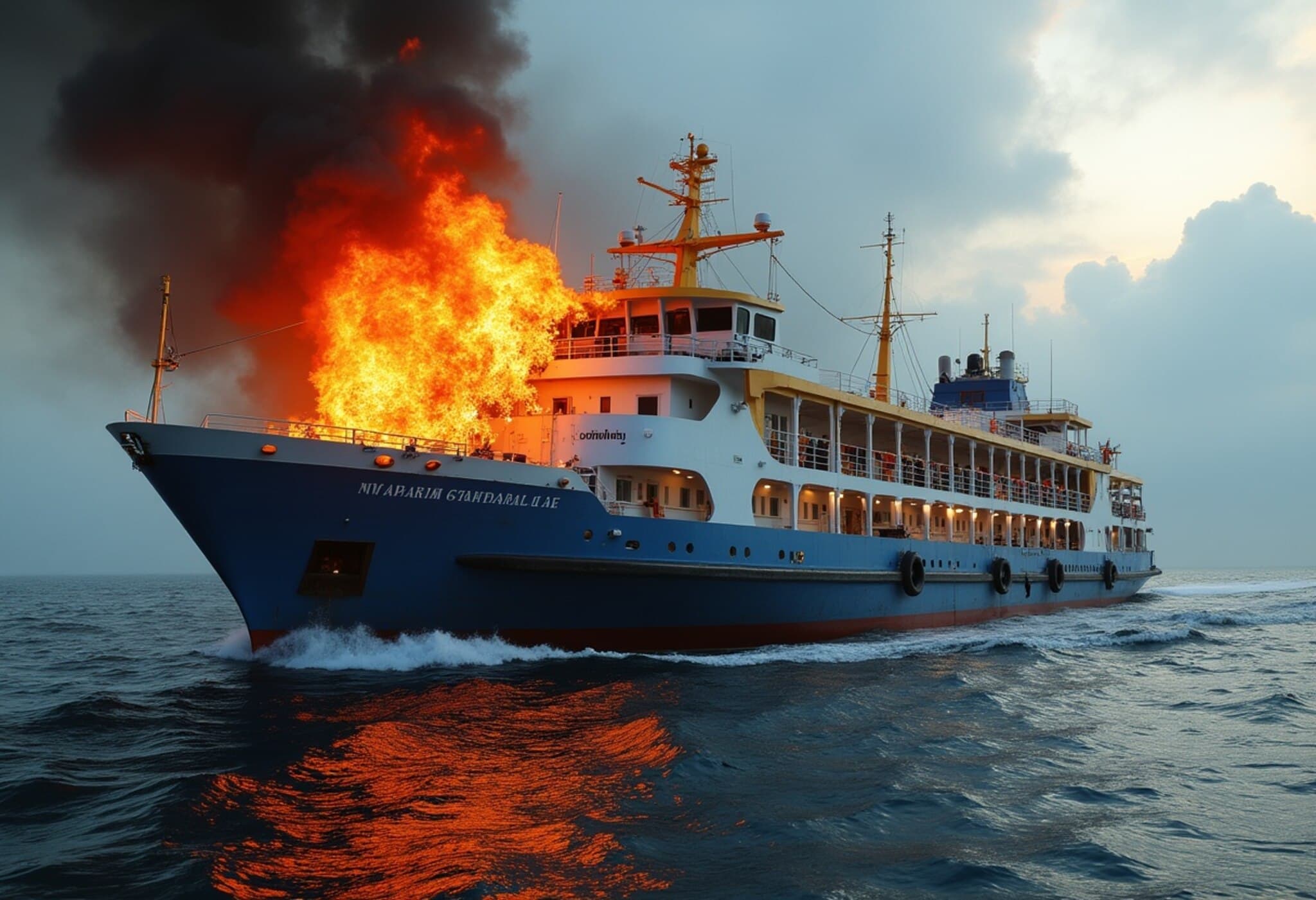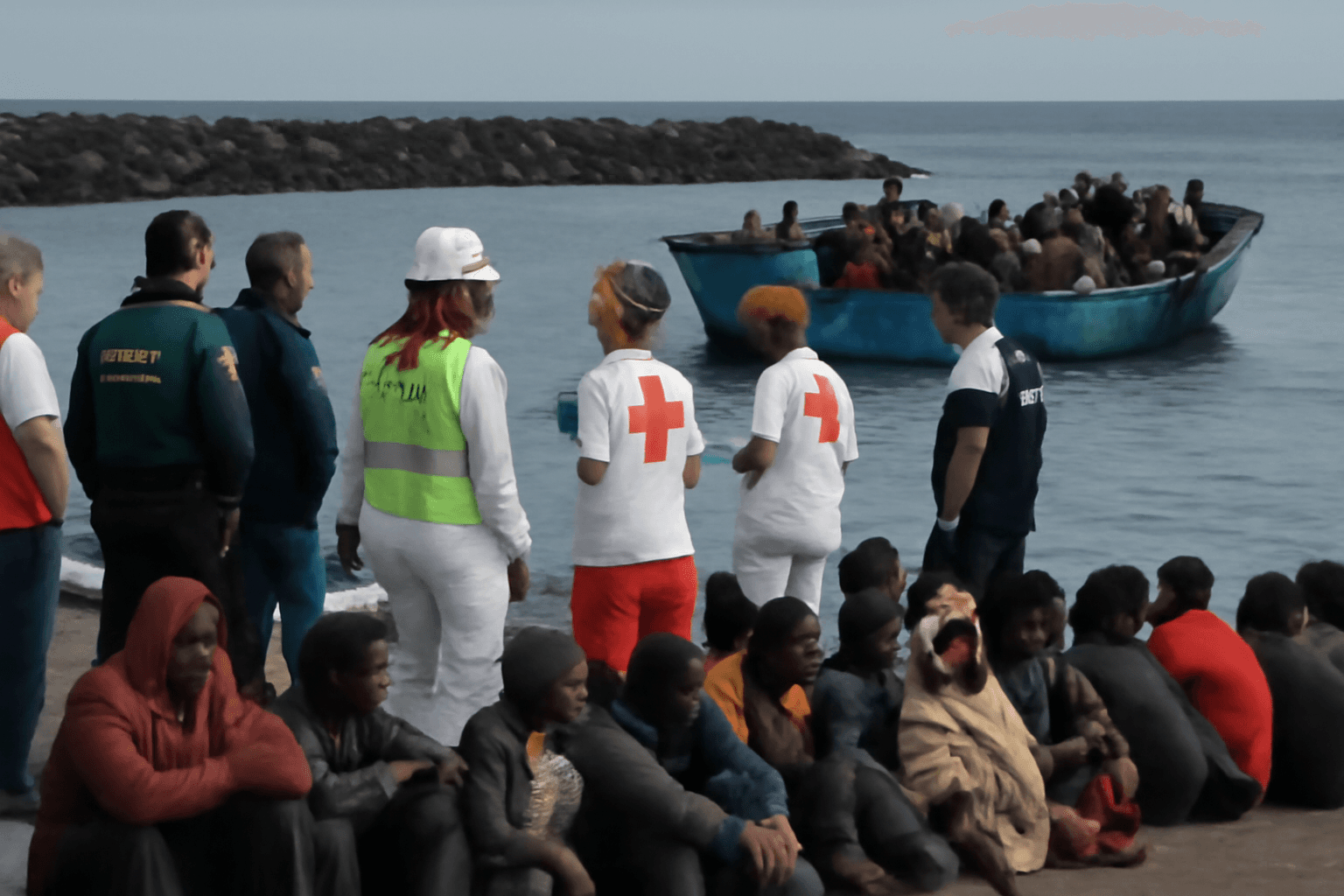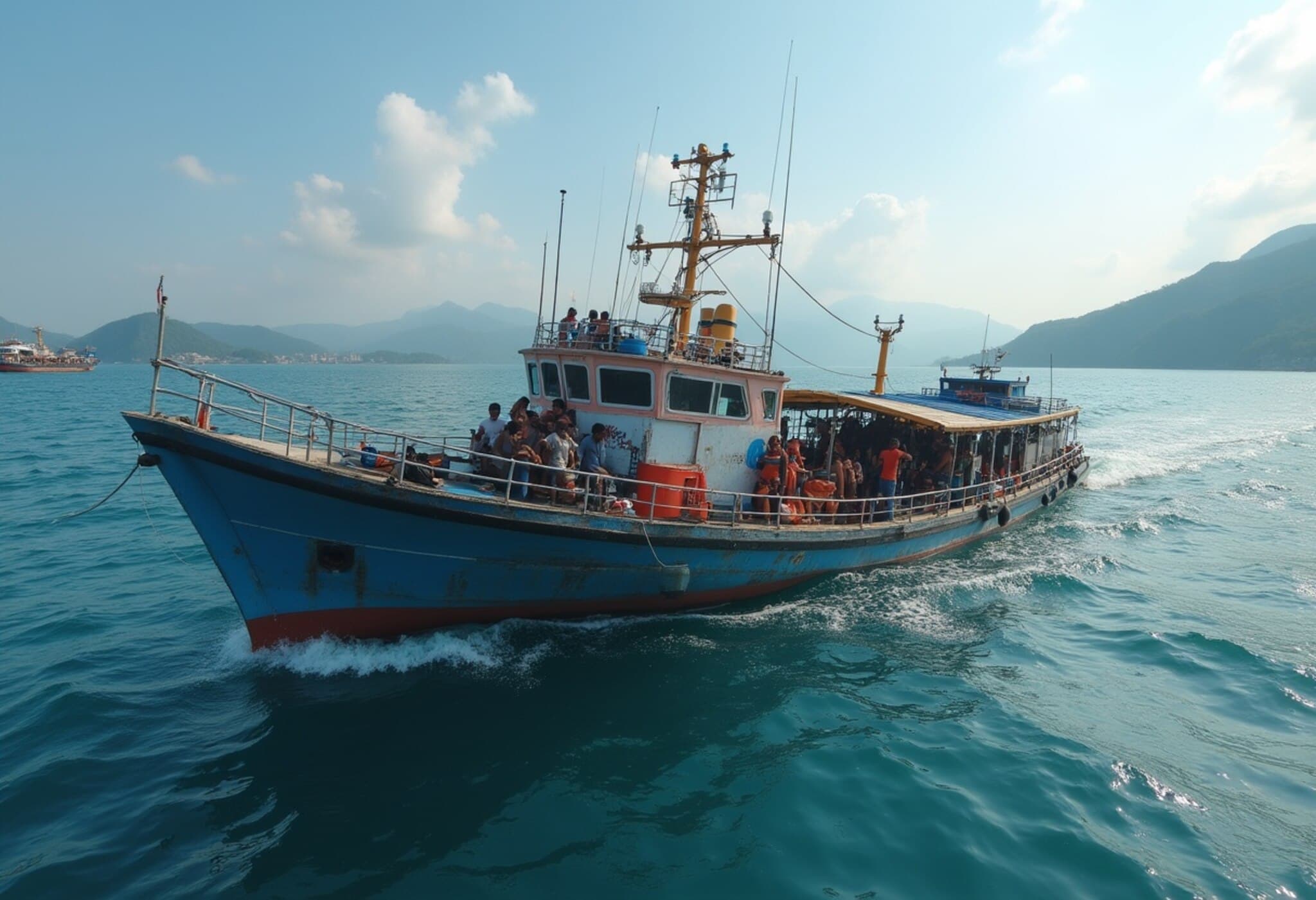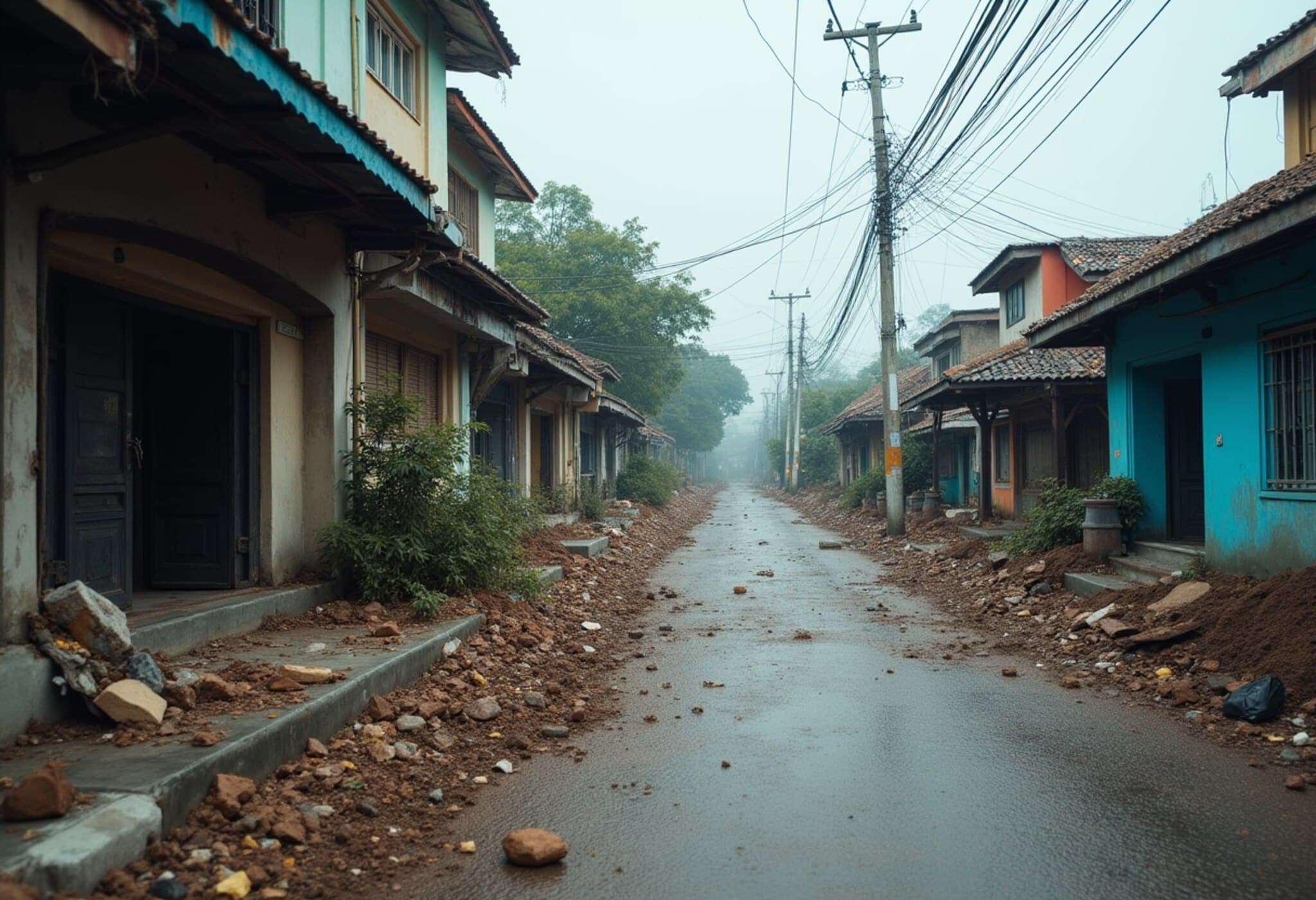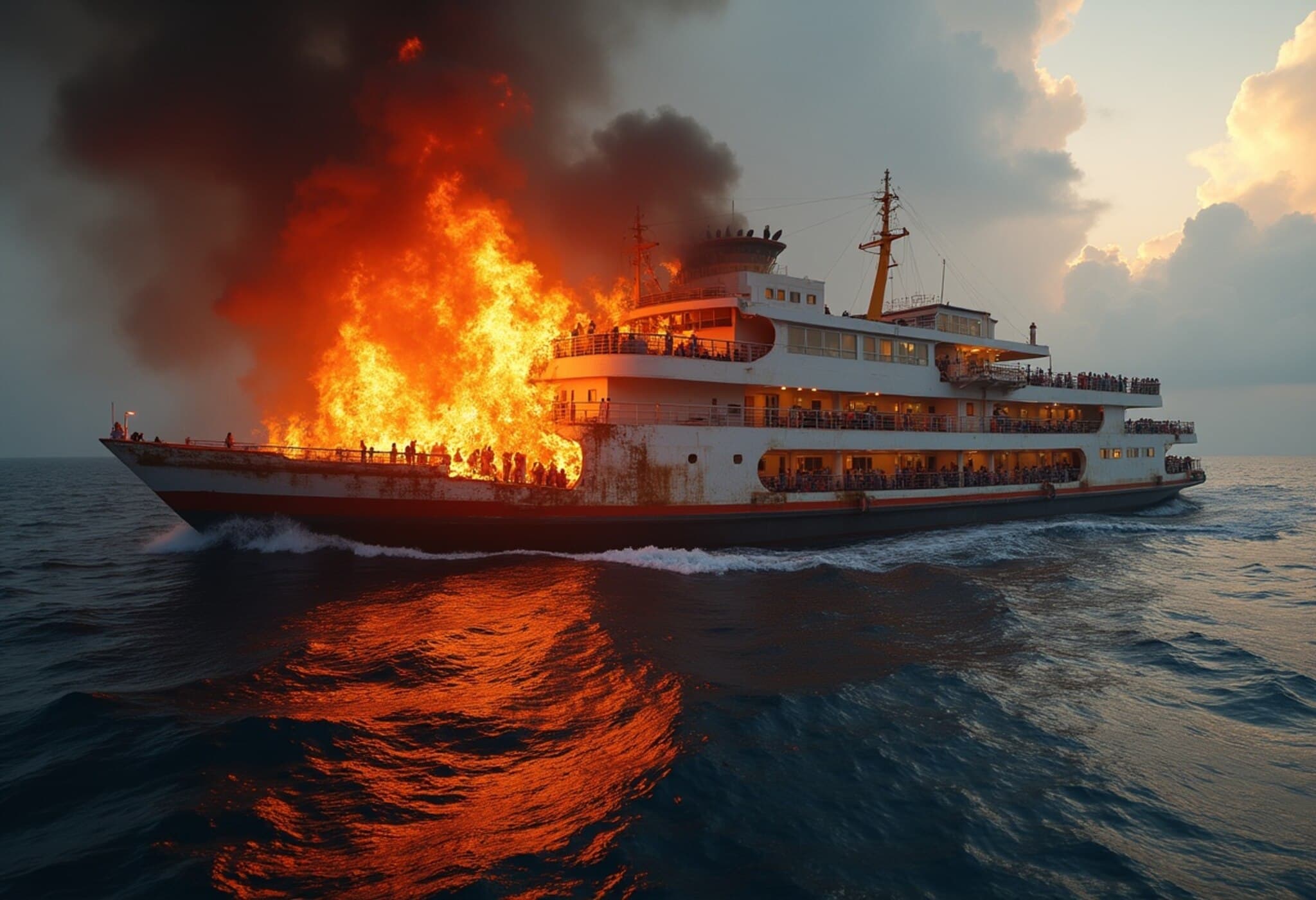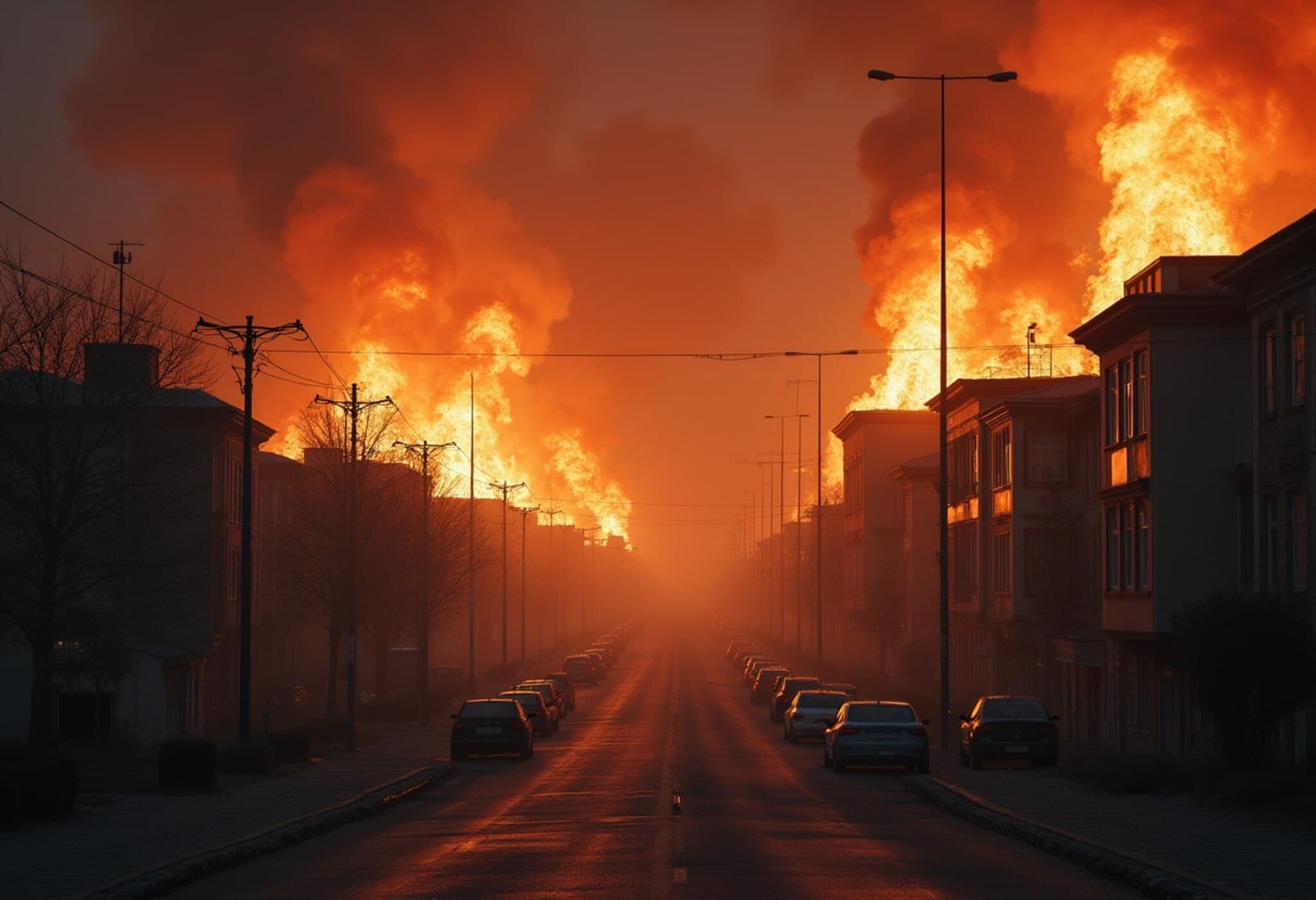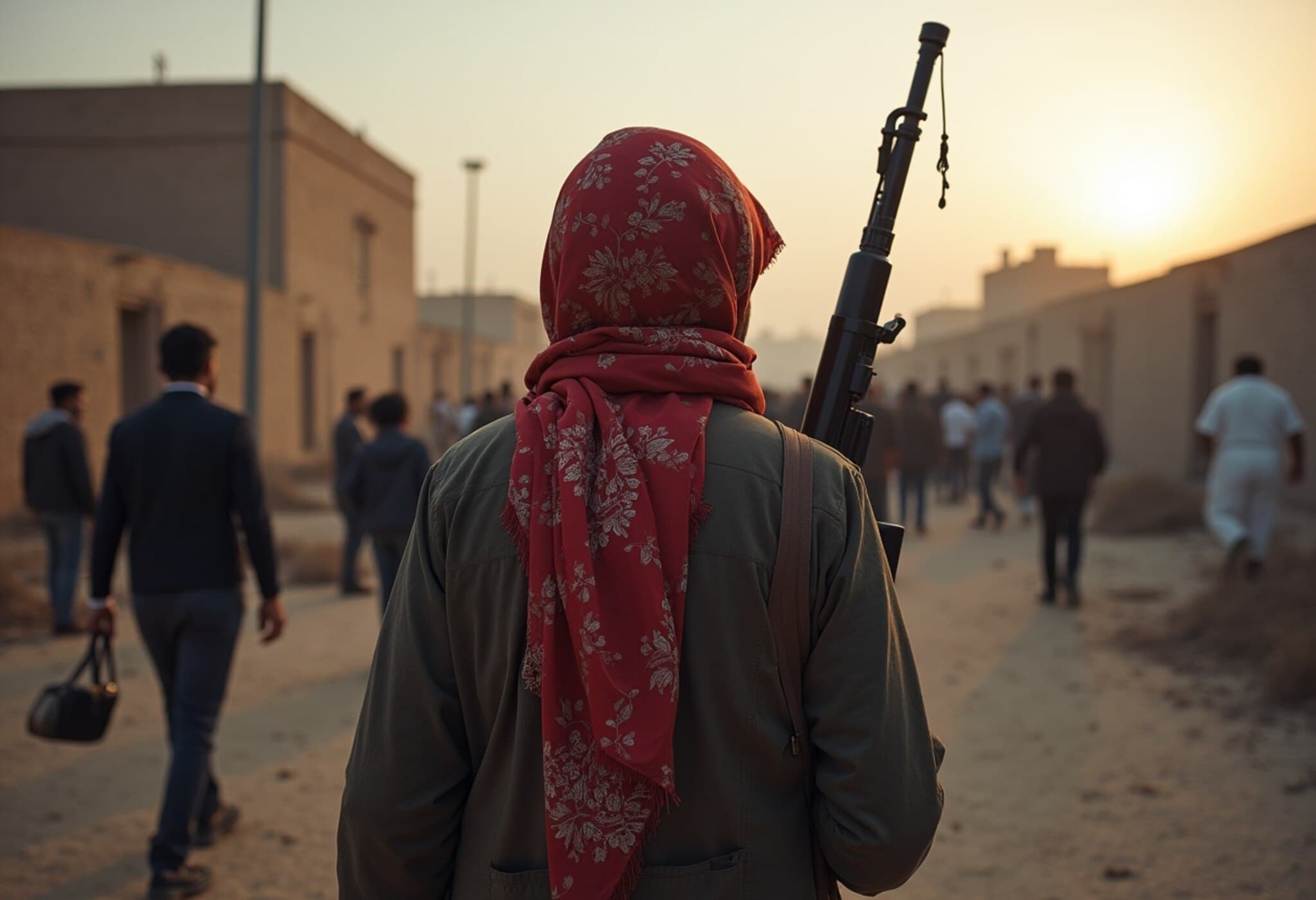Tragedy at Sea: Indonesian Passenger Ferry Catches Fire
In a harrowing incident off the coast of North Sulawesi, Indonesia, 568 passengers and crew survived after the KM Barcelona 5 passenger ferry caught fire on July 20, 2025. Despite the overwhelming panic, rescue teams and vigilant local fishermen pulled survivors from the choppy waters, although the blaze tragically claimed three lives, including that of a pregnant woman.
Swift Rescue Operation Amid Chaotic Conditions
The ferry was en route on its routine half-day journey from Melonguane port in the Talaud Islands district. The fire erupted near the stern of the vessel, quickly engulfing it in flames and thick black smoke, causing widespread alarm among passengers. Images from the scene showed passengers, many clad in life jackets, plunging into the sea to escape the inferno.
First Admiral Franky Pasuna Sihombing, head of the Manado Navy Base, confirmed that the evacuation involved a coast guard ship, six rescue vessels, and multiple inflatable boats. Many survivors were brought ashore to nearby islands, aided by local fishermen who bravely assisted those drifting in the turbulent sea.
Revised Fatality Count and Passenger Discrepancies
Initial reports indicated five deaths; however, updates on July 21 clarified the number at three fatalities after two patients, including a two-month-old infant with seawater-filled lungs, were saved. The infant's recovery underscores the complexity and urgency of medical responses post-rescue.
Notably, the ferry’s passenger manifest recorded only 280 passengers and 15 crew members. In reality, rescue agencies confirmed 568 survivors, revealing a significant overcapacity situation against the ferry’s stated capacity of 600. Discrepancies between official manifests and actual passenger counts are common in Indonesian waters and present serious challenges for safety enforcement and emergency response.
Contextualizing the Incident Within Indonesia's Maritime Safety Challenges
Indonesia's sprawling archipelago of over 17,000 islands depends heavily on ferries for inter-island transportation. Unfortunately, lax safety oversight combined with overcrowding frequently results in maritime disasters. Earlier in July, a speedboat capsized amid stormy seas, and another ferry tragedy near Bali led to at least 19 deaths with dozens still missing after an extensive two-week search effort.
The KM Barcelona 5 fire highlights persistent vulnerabilities in maritime safety protocols in Indonesia, directly impacting thousands of lives who depend on these ferries daily. Experts argue that stricter regulatory enforcement, transparent passenger tracking, and mandatory safety drills are crucial to prevent recurring tragedies.
Expert Perspective: Improving Maritime Safety in Archipelagic Regions
From a policy standpoint, Indonesia’s struggle mirrors challenges faced by many archipelagic nations globally. Ensuring accurate passenger manifests isn't merely bureaucratic—it can save lives by enabling precise, timely rescue operations. Furthermore, fostering collaboration between government agencies and local communities, such as fishermen, enhances response capabilities.
The broader economic impact is also considerable. Frequent maritime accidents undermine public confidence in ferry services, potentially disrupting trade and tourism—vital lifelines for Indonesia’s island economies.
Looking Ahead: Emergency Preparedness and Rescue Coordination
- Enhanced Training: Prioritizing crew training for fire response and evacuation procedures.
- Modernized Equipment: Upgrading firefighting systems and life-saving gear on vessels.
- Passenger Accountability: Implementing digital or biometric ticketing to maintain accurate counts.
- Community Engagement: Formalizing local fishermen involvement in emergency protocols.
These strides, coupled with stronger regulatory frameworks, could significantly reduce the human toll from future maritime incidents in Indonesia and similarly vulnerable regions.
Editor's Note
The KM Barcelona 5 disaster is a sobering reminder of the precarious nature of maritime travel in island nations where enforcement gaps can cost lives. Beyond the immediate rescue success, this event should prompt urgent examination of safety policies, vessel capacity controls, and community-based rescue mechanisms in Indonesia. How can stakeholders balance economic necessity with passenger safety, and what lessons can be learned to better protect lives in an archipelago heavily reliant on sea transport? These questions remain critical as the nation grapples with preventing future tragedies.

